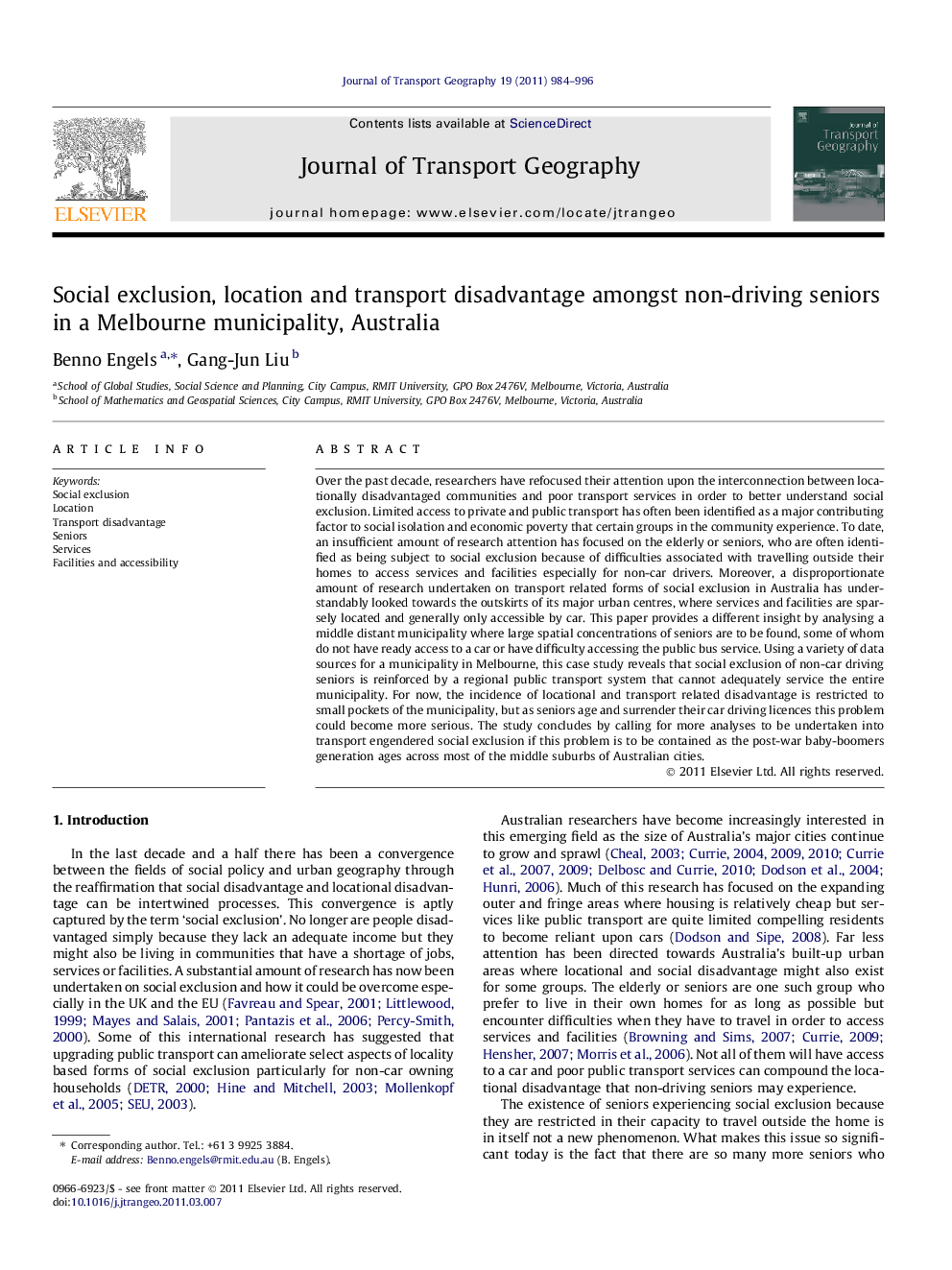| Article ID | Journal | Published Year | Pages | File Type |
|---|---|---|---|---|
| 1059532 | Journal of Transport Geography | 2011 | 13 Pages |
Over the past decade, researchers have refocused their attention upon the interconnection between locationally disadvantaged communities and poor transport services in order to better understand social exclusion. Limited access to private and public transport has often been identified as a major contributing factor to social isolation and economic poverty that certain groups in the community experience. To date, an insufficient amount of research attention has focused on the elderly or seniors, who are often identified as being subject to social exclusion because of difficulties associated with travelling outside their homes to access services and facilities especially for non-car drivers. Moreover, a disproportionate amount of research undertaken on transport related forms of social exclusion in Australia has understandably looked towards the outskirts of its major urban centres, where services and facilities are sparsely located and generally only accessible by car. This paper provides a different insight by analysing a middle distant municipality where large spatial concentrations of seniors are to be found, some of whom do not have ready access to a car or have difficulty accessing the public bus service. Using a variety of data sources for a municipality in Melbourne, this case study reveals that social exclusion of non-car driving seniors is reinforced by a regional public transport system that cannot adequately service the entire municipality. For now, the incidence of locational and transport related disadvantage is restricted to small pockets of the municipality, but as seniors age and surrender their car driving licences this problem could become more serious. The study concludes by calling for more analyses to be undertaken into transport engendered social exclusion if this problem is to be contained as the post-war baby-boomers generation ages across most of the middle suburbs of Australian cities.
► This study investigated how non-driving seniors could experience social exclusion. ► Basis of this study is a middle distant municipality of metropolitan Melbourne. ► Data types used included land use audit, resident survey and census data. ► We found pockets of locational based public transport disadvantage in municipality. ► Predict this issue will grow as residents age and stop driving in next decade.
